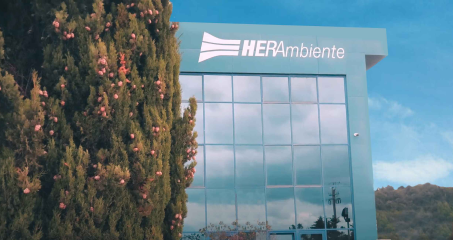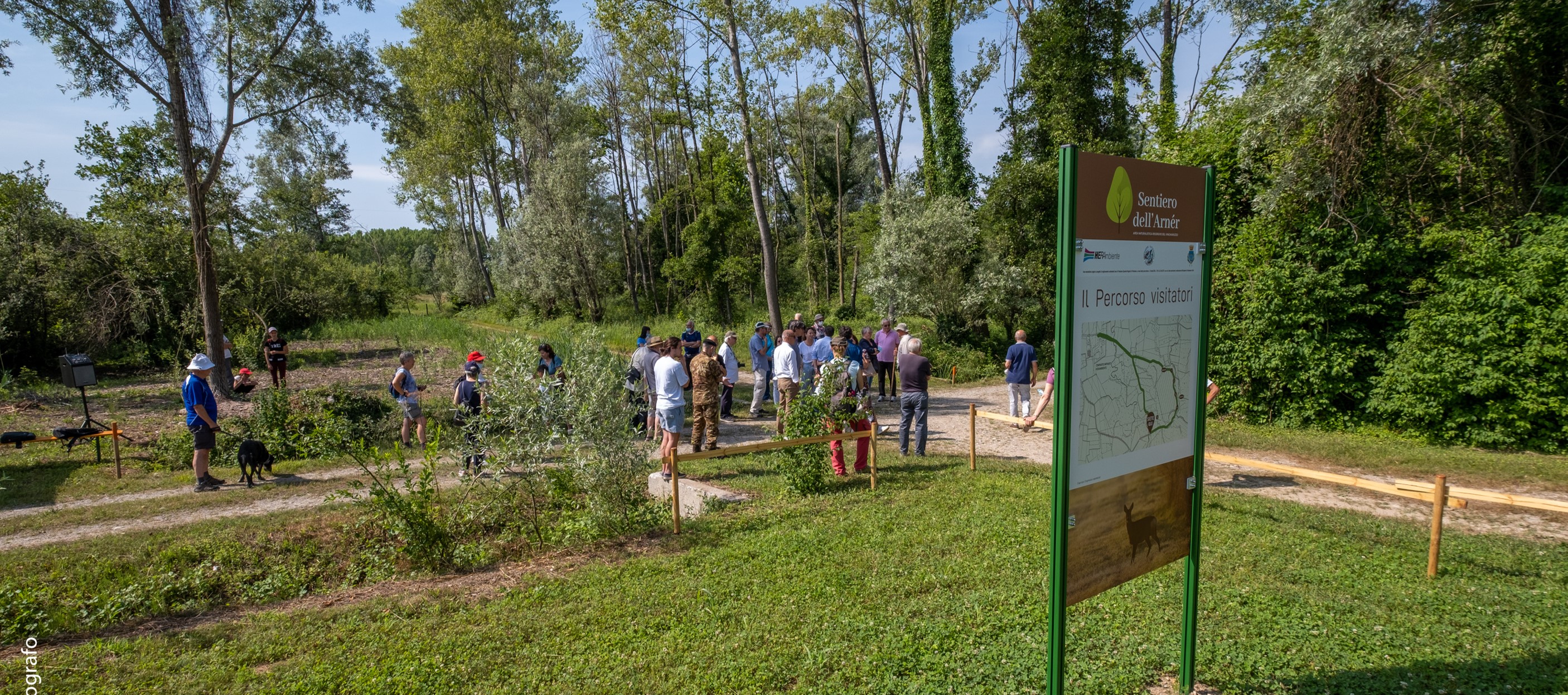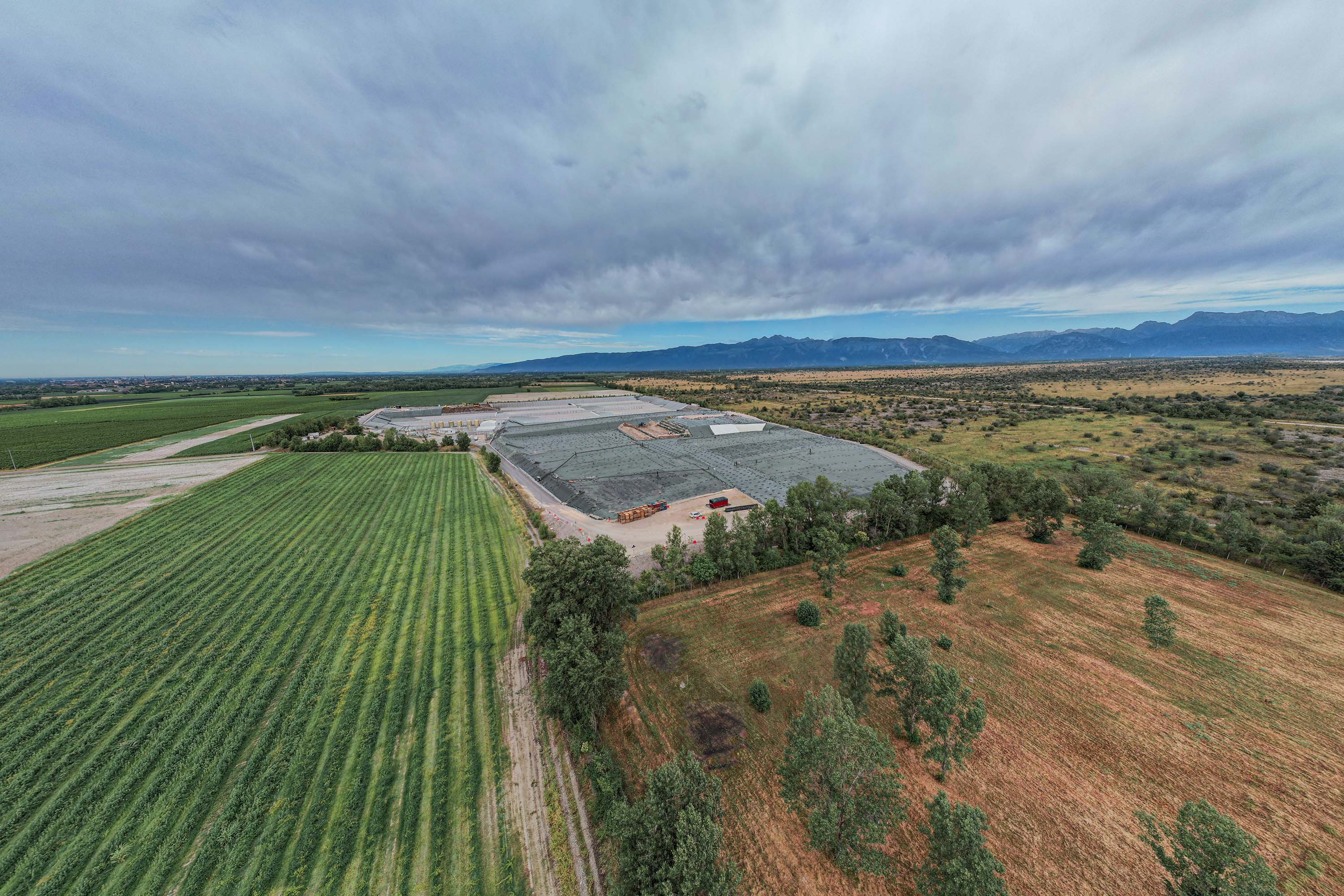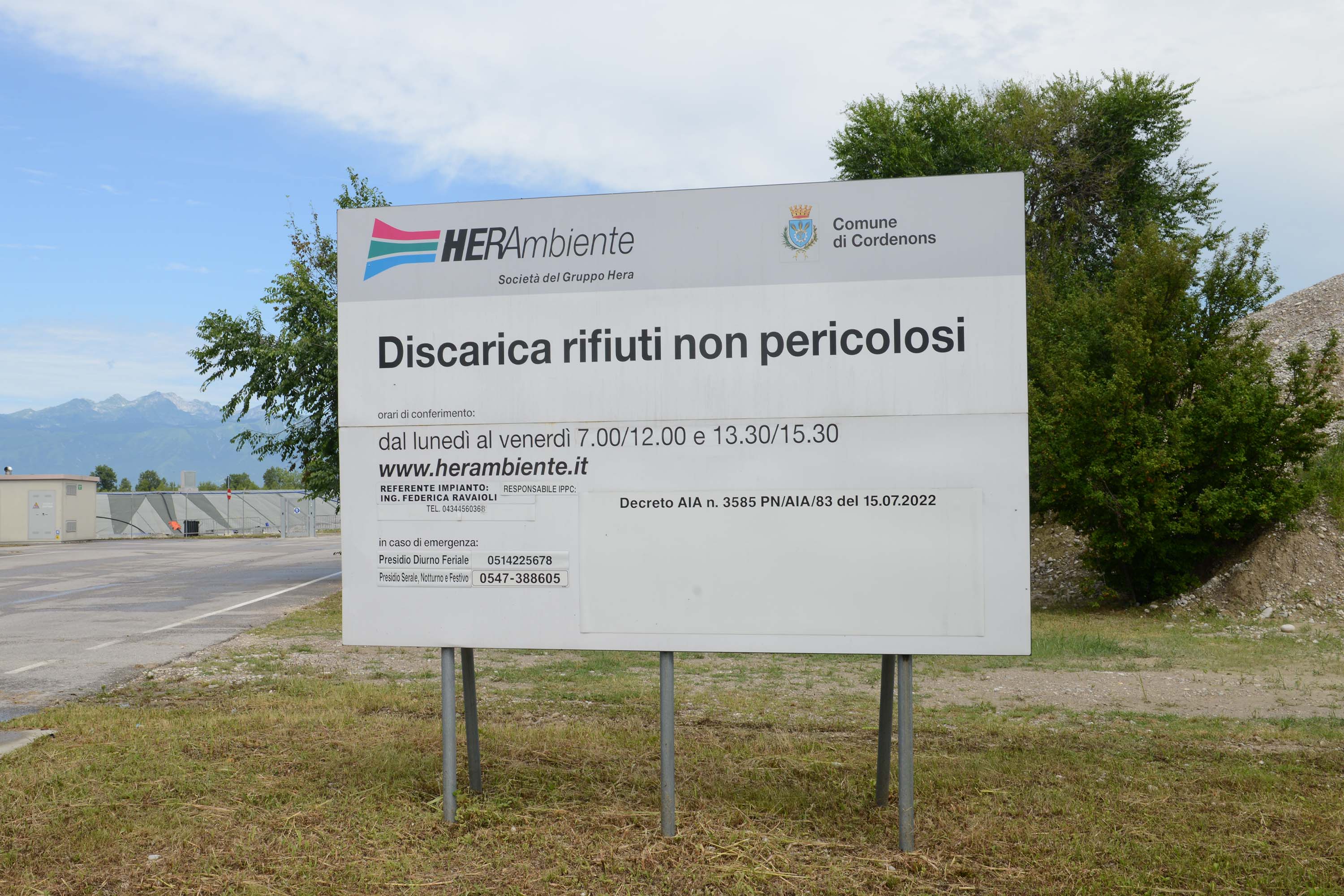Overview
The non hazardous waste landfill is located in an agricultural area to the east of the village of Cordenons (Pordenone) and near the Cellina Meduna firing range. Structurally, it is a typical lowland landfill, with part of the reservoir excavated and the other part raised to a maximum of 82.40 m above sea level. The plant is primarily intended to receive waste from the treatment cycle of municipal and similar waste from plants located in the region, in addition to the availability of cells dedicated solely to the disposal of waste that contains asbestos.
Page update 3 June 2021
Form
-
Landfill type
non hazardous waste according to Ministerial Decree 27/09/2010 with cells dedicated solely to the disposal of waste containing asbestos (EWC 170605*) -
Operational status
July 2019 -
Expected saturation
approximately 7 years (July 2026) -
General characteristics of the landfill
area under concession, NLR Sheet 5, Municipality of Cordenons (Pordenone), Cadastral code C991 Sheet 5, Parcel 667, Total area of the plant 183,500 m2. -
Overall capacity
cell no. 1: 60,371 m3; cell no. 2: 64,392 m3; cell no. 3: 70,470; cell no. 4: 76,704 m3; cell no. 5: 78,125 m3; cell no. 6: 132,473 m3; cell no. 7: 136,285 m3; cell no. 8: 160,731 m3. Total 779,551 m3.
Waste accepted for storage in the landfill must comply with the requirements of the Operational Management Plan approved by the competent authorities.
Waste will be handled and loaded into the landfill, taking care to minimise the impact on the environment, using the waste to form overlapping, compact layers in order to maximise the density of the waste placed in the landfill; the cultivation will advance by standardised layers, with stable fronts, and with a slope of <30%. At the same time, infiltration from rainfall must be reduced to minimise the formation of leachate, by covering with synthetic geomembranes the waste placed in areas temporarily not cultivated.
At the end of each working day, the waste must be covered with a continuous sheet of LDPE or HDPE or with other suitable material/waste. Cells 3 and 4 are intended for the disposal of EWC 170605 waste that comes from the implementation of safety measures of the pile on site and from external suppliers.
Waste will be handled and loaded into the landfill, taking care to minimise the impact on the environment, using the waste to form overlapping, compact layers in order to maximise the density of the waste placed in the landfill; the cultivation will advance by standardised layers, with stable fronts, and with a slope of <30%. At the same time, infiltration from rainfall must be reduced to minimise the formation of leachate, by covering with synthetic geomembranes the waste placed in areas temporarily not cultivated.
At the end of each working day, the waste must be covered with a continuous sheet of LDPE or HDPE or with other suitable material/waste. Cells 3 and 4 are intended for the disposal of EWC 170605 waste that comes from the implementation of safety measures of the pile on site and from external suppliers.
The amount of leachate produced will be collected in the landfill body through a drainage network with slotted pipes and draining material. From the landfill bottom of each lot, the leachate will be conveyed by gravity to some collection/pumping wells that feed the storage tanks through dedicated piping, and from there the leachate will be sent to authorised treatment plants.
The biogas produced by the landfill will be taken from a vertical collection system consisting of drainage wells, which, through a specific surface supply network (HDPE pipes), will first convey it to the regulation substation and then to the suction station.
The biogas extracted will be sent for thermal destruction in high-temperature flaring, and possibly, depending on its quantity and quality, be recovered to produce energy in a cogeneration plant.
The biogas extracted will be sent for thermal destruction in high-temperature flaring, and possibly, depending on its quantity and quality, be recovered to produce energy in a cogeneration plant.
- Bottom barrier made of compacted clay, thickness 100 cm;
- Bentonite geocomposite bed;
- 2.5 mm thick HDPE geomembrane;
- Protective geotextile sheet;
- Layer of fine sand (20 cm thick);
- 3 mm thick PE geo mesh;
- Gravel layer for the bottom drainage of leachate (thickness 30 cm).
From the bottom to the top, the following waterproofing package has been built in accordance with Italian Legislative Decree 36/2003:
- 1 m thick layer of topsoil on which the plant species specified in the environmental restoration plan are to be planted;
- geotextile membrane for separation;
- 0.50 m thick infiltration water drainage layer;
- 1.5 mm thick HDPE geomembrane;
- 0.50 m thick layer of soil made of compacted clay and a hydraulic conductivity of ≤10-8 m/s;
- geotextile membrane for separation;
- 0.50 m thick biogas drainage layer.
The final layout project was envisaged in compliance with Italian Legislative Decree 36/2003 and involves adding a multi-layer roof consisting of the following layers from top to bottom:
To allow the environmental recovery of the site, the operator, in agreement with the local authorities, has identified a series of mitigation/compensation works to be carried out within and in the area surrounding the landfill. An environmental improvement project has been created in an area outside the landfill site located within the Magredi di Pordenone SPA (Special Protection Area), covering an area equal to that used by the landfill.
To allow the environmental recovery of the site, the operator, in agreement with the local authorities, has identified a series of mitigation/compensation works to be carried out within and in the area surrounding the landfill. An environmental improvement project has been created in an area outside the landfill site located within the Magredi di Pordenone SPA (Special Protection Area), covering an area equal to that used by the landfill.
- groundwater;
- leachate;
- biogas composition;
- emissions conveyed to the biogas flare;
- emissions from the landfill body;
- air quality;
- noise;
- odour;
- landfill body morphology;
- weather and climate parameters;
- Incoming waste and products (quality and quantity of leachate).
The environmental matrices and emissions monitored as environmental surveillance of the potential impact of the operational management of the landfill are:








